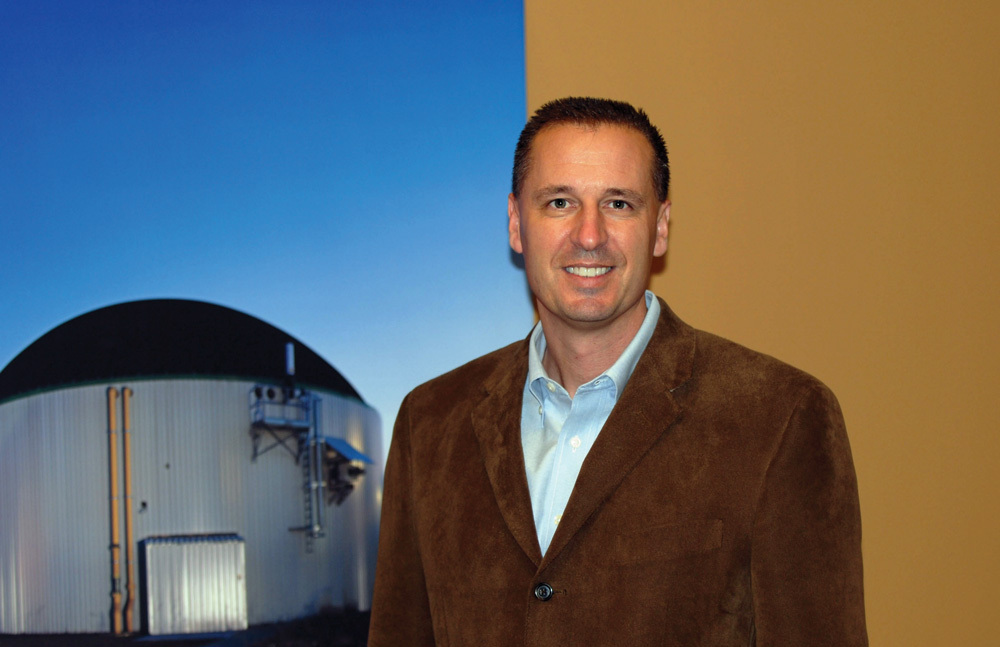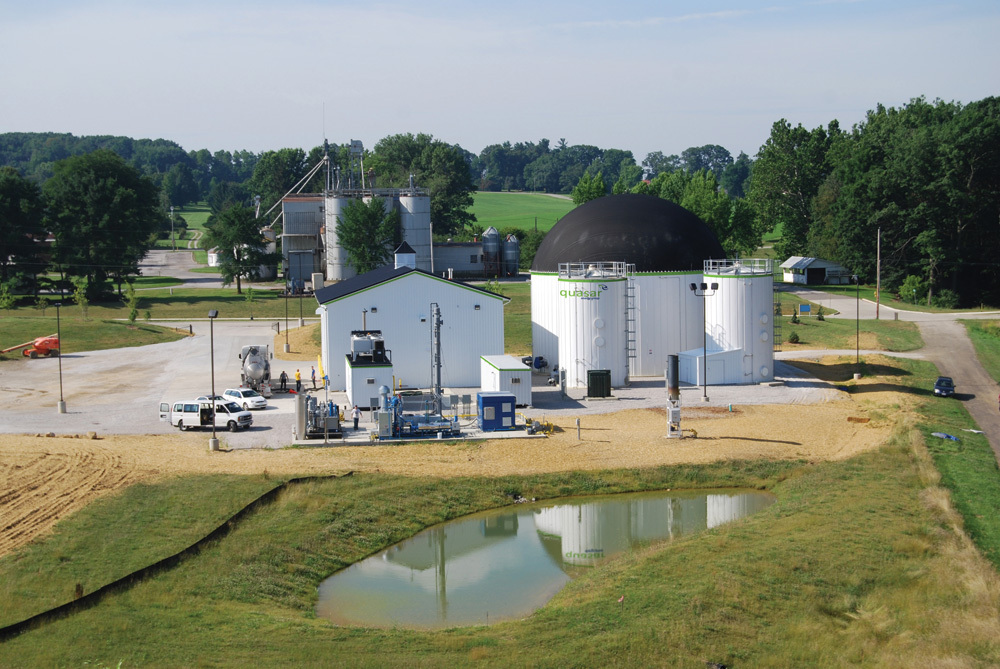Show me the Money










November 23, 2010
Though the U.S. is slowly hobbling down the path to recovery, the economic crisis will continue to hamper project development in 2011. Knowing just what lending intuitions and investors are looking for in new or existing projects, however, as well as what they aren’t, will help beef up project profiles.
While still up against a capital-constrained environment, compared with some other renewable energy technologies, biomass power is becoming an attractive potential investment. One significant reason is that reliable, consistent base-load electricity generation is critical to large power utilities and those are provisions that wind and solar do not bring to the table, says Jerry Peters, managing partner at California-based venture capital firm Energy Power Partners. “Base-load renewables are very important to utilities, especially if they desire to or are required by a state renewable portfolio standard (RPS) to generate higher and higher percentages of their power from renewables,” Peters says. “Intermittent resources like wind and solar require utilities to have significant amounts of backup power. We like biomass because it will deliver.”
While non-intermittency may be the most enticing quality to an investor or financer, according to Peters, cost competitiveness is a close second.
Lender/Investor Perspectives
“To a large extent, over the next 20- to 30-year period, we expect biomass to be competitive with fossil fuels,” Peters says. “Particularly, we cite landfill gas as being very competitive, even with currently priced natural gas. In biomass-rich areas such as the Southeast, it can be very competitive with other sources of fuels, even without a lot of incentives.”
Paul Ho, managing director at private equity firm Hudson Clean Energy Partners, agrees that biomass is becoming more attractive to lenders than ever before, but he still believes it’s more difficult to finance biomass projects than wind and solar projects. “Non-intermittency helps from a capacity standpoint, but feedstock requirements pose more of a risk—a lender or investor would have to be very comfortable, knowing there’s a definite way to mitigate feedstock price, availability and risk,” he says. “A very thoughtful feedstock procurement strategy is one of the first things we look at.”
Peters reiterates the importance of locking in a fixed fuel supply and price, pointing out that while most investors, both debt and equity, are comfortable with landfill gas projects, the challenge of securing fuel cost pass-throughs still exists for conventional biomass fuels. “I don’t see many lenders providing financing for projects that don’t have a fixed fuel cost—which you can get in landfill gas—or don’t have a pass-through of a commodity price to the utility,” Peters says. “I have seen a few, but they’re difficult.”
Peters adds that a long-term power purchase agreement (PPA) can be a powerful influencer as well. PPAs are more likely in states that have an RPS, as higher energy rates can be achieved through the availability of renewable energy credits. That isn’t always the case though, as Peters says his firm has seen some attractive projects in states without an RPS.
Venture capital firms and banks aren’t the only investors to court today, as corporate giants such as Waste Management are strategically investing in new companies and projects
Wes Muir, spokesman for Waste Management, says in 2011 the company will continue to make investments and acquisitions, in addition to the many the company made in the biomass energy/biofuel industry in 2010. The company uses a slightly different tactic than typical investors and lenders, however, by investing prior to the technology going commercial. “We’re looking at all sorts of new and emerging technologies in waste-based energy,” Muir says. “We make these strategic investments in companies that we think show great promise, because getting them at the ground floor is a lot cheaper than going out and buying when [the technology] is commercially viable.”
Advertisement
Regardless how innovative or promising a project may be, existing or pending government regulations will be a key component of project finance in 2011. “Since it was assumed that biomass would be exempt, going forward we’re going to have to see some clarity with respect to how the U.S. EPA’s (Greenhouse Gas) Tailoring Rule may affect biomass,” Peters says. “One of the interests investors have had in biomass is that there’s the assumption that it’s treated as a neutral carbon source, and therefore isn’t subject to much regulation.”
That’s something the industry will need to overcome, Ho agrees. “Investors will be keeping a close eye on that,” he says.
While government grants and loan guarantees have played an incremental role in financing projects during the economic recession, Peters says U.S. DOE loan guarantee money through the Recovery Act is likely to soon run out. “I believe we only have enough room for about $20 billion, and the DOE recently issued its most recent guarantee for wind projects, which would bring it to $16 billion, so we’re just about out of that. A lot will depend on government guarantee of debt, especially given conventional debt lenders' unwillingness to take on some of the risks associated with biomass.”
To really take off, from Peters' perspective, biomass will need continued government support, as well as the addition of a national RPS.
Talking Strategy
Quasar energy group, an anaerobic digestion system developer, is one company that has been successful in financing projects despite the economic crisis. Quasar Chief Financial Officer Steven Smith says the first move in securing steady footing was careful, long-term development of the company’s technology. “We spent a lot of time looking at European systems, selecting the best components from them,” he says.
After successfully developing its first facility in Ohio through a German firm, the company had fully engineered a “Lego building block model,” according to Smith. “They’re modular, expandable and repeatable, and we’ve invested lots of time in development so we would be poised to move forward,” he says.
Initially the company was planning on selling systems, as well as building and operating its own, but was forced to change plans. “When the capital markets went into the chaos that they did 24 months ago, the first component fell away,” Smith says. “Folks didn’t have the capital for their existing core business let alone for something that could be complementary, or a new business stream,” he says. “When coupled with banks not being able to lend because their balance sheets weren’t strong enough, that created a lot of chaos.”
The company is building its facilities with 100 percent equity. “We’re able to recapitalize part of the equity based on grants, incentives and low-interest loans from state agencies,” Smith says. “Right now, the largest contributor to our projects has been the USDA, through its Rural Energy for America Program. Ohio specifically has put some incentives in place to encourage not only renewable energy but the manufacture of components, and we’ve been fortunate to have some sponsorship from that.”
Advertisement
The most significant component to Quasar’s financial strategy has been the Recovery Act Section 1603 project cost reimbursement provision of 30 percent. “We already submitted one application, and from the date we put in the application to the time we received funds in our account was only a 27-day window,” Smith says. “They allocate 60 days if everything’s perfect, and we were so successful because we made sure that we fully understood the program—we aligned ourselves with accountants and attorneys who helped us develop a game plan—so that when we submitted our application, we knew it would be complete and accurate.”
Once Quasar completed the application and made sure everything was correct, the company went back through it once more to make sure it wasn’t giving too much or too little information. “There are a lot of horror stories out there, people saying they aren’t getting the money, or that its taking longer than expected, but my response is that they just weren’t prepared,” Smith says. “It is a daunting task, especially if you haven’t been through it before, but it’s been a very good program for us and we are hopeful that some of the program terms get extended into next year for beginning construction. We’re doing everything possible strategically to communicate with legislators to let them know it has been a meaningful program.”
Today, the banking industry is just not available for development companies such as Quasar, Smith says. “The way we get loans is by putting 100 percent cash in the bank to secure it. We had to do that for USDA purposes—you have to get a grant and a loan—so we personally guarantee it, and then we pledge cash so it really has no impact to my capital structure on the debt side.”
Overall, Smith, who has more than 25 years of experience in the capital market, says he predicts more of an interest in purchasing systems in 2011 than in 2010, though he still describes the capital markets as extremely chaotic. “I’ve never seen the market like it still is today,” he says.
2011 and Beyond
The problem with moving forward with such chaos is that people are worrying about necessities versus luxury, and that will likely continue in 2011. “There’s legislation today that helps us, and if states and the U.S. want to pass an RPS that will help too,” Smith says. “There will be other meaningful incentives that will come into play, but right now it’s all on a year-to-year basis.”
Overall, the finance market conditions should be better in 2011 than in 2010, according to Ho. “Banks are less capital constrained now, so more are willing to lend, and more biomass deals are getting financed so banks have more familiarity with the assets,” he says.
Bob Cleaves, president and CEO of the Biomass Power Association, says he thinks the biomass power industry will continue to develop at the rate that it has been. “Disappointing, and opportunistic here and there,” he says. “I don’t think we’ll see a big movement of the needle until we get a federal renewable energy standard.”
As far as finance trends go, Peters says aside from landfill gas, he predicts lenders will show more interest in anaerobic digestion projects. “They skirt around the regulatory issues with respect to carbon, and there’s the fact that the fixed fuel is there. We’re interested in looking at anaerobic digestion when it comes to biomass sources such as agriculture waste,” he says. “When most say biomass, they think burning forest residual, but we look at it as a much wider potential area. It will be one of the areas in which we will be focusing.”
Author: Anna Austin
Associate Editor, Biomass Power & Thermal
(701) 738-4968
aaustin@bbiinternational.com
Upcoming Events





